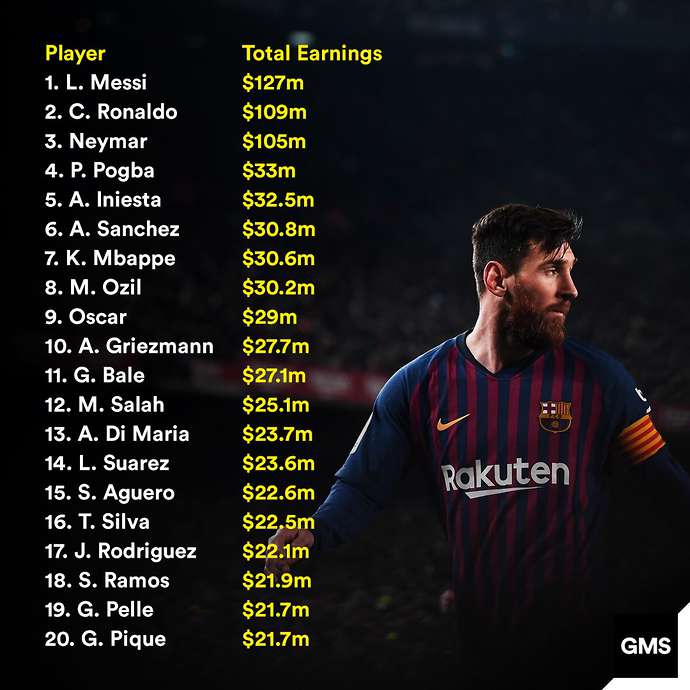
The Red Line: A Comprehensive History of Disciplinary Records in the UEFA Champions League
The UEFA Champions League, the pinnacle of European club football, is renowned for its breathtaking skill, tactical masterclasses, and unforgettable drama. Yet, beneath the glamour and glory lies a constant tension: the fine line between competitive fire and outright transgression. Disciplinary actions – from the flash of a yellow card to the career-altering consequences of a red, from individual player bans to club sanctions – have not merely been footnotes in the tournament’s history; they have often been pivotal moments, shaping narratives, altering outcomes, and defining legacies. This article delves into the rich and often controversial history of disciplinary records in the Champions League, exploring its evolution, iconic incidents, and enduring impact.
I. The Genesis of Discipline: From Gentlemen’s Agreements to Structured Sanctions
In the early days of the European Cup, the precursor to the Champions League, disciplinary measures were less formalised than today. Referees largely relied on their discretion, and yellow and red cards, as we know them, were not introduced until the 1970 World Cup, with UEFA gradually adopting them across its competitions thereafter. Prior to this, a player might be cautioned verbally or even sent off directly for severe infractions, but without the standardised visual cues.
The advent of the card system brought a new layer of clarity and consistency. Yellow cards for cautions (unsporting behaviour, dissent, persistent fouling) and red cards for dismissals (serious foul play, violent conduct, second yellow card) became universal symbols. This evolution mirrored a broader shift in football towards greater professionalisation and a desire to curb excessive aggression, particularly in high-stakes matches where emotions ran high. UEFA also began to establish a more robust disciplinary committee, moving beyond on-field decisions to review incidents post-match, impose retrospective bans, and issue fines for various infractions, including simulation, abusive language, and later, more severe off-field misconduct.
II. Iconic Incidents and Infamous Players: When Discipline Defined the Moment
The history of the Champions League is replete with disciplinary moments that have become etched in football folklore. These incidents often involved players known for their fiery temperaments or crucial matches where the stakes amplified the consequences.
Perhaps one of the most iconic disciplinary moments, though not directly in the Champions League final, involved a player whose legacy is synonymous with the competition: Zinedine Zidane. His infamous headbutt on Marco Materazzi in the 2006 World Cup final demonstrated the ultimate cost of losing composure on the grandest stage. While it wasn’t a UCL incident, it profoundly influenced discussions about player conduct in high-stakes tournaments and resonated deeply within the football community, including the UCL.
Within the Champions League itself, numerous players have accumulated an unenviable collection of cards. Sergio Ramos, the talismanic former Real Madrid captain, stands out as one of the most booked players in the competition’s history. His aggressive, no-holds-barred defending, while often effective, frequently pushed the boundaries of the rules, leading to a remarkable number of yellow cards and several crucial red cards that sometimes left his team vulnerable. His tactical fouls, often seen as a necessary evil by his supporters, were a constant source of debate.
Another Real Madrid figure, Pepe, became notorious for his combative and often volatile style. Throughout his career, particularly during his time at the Bernabéu, Pepe was involved in numerous controversial incidents, earning him a reputation as one of the most aggressive defenders in Europe. His red card against Barcelona in the 2011 semi-final, for a high challenge on Dani Alves, was a defining moment in a fiercely contested El Clásico rivalry, sparking widespread debate about refereeing standards and player intent.
Edgar Davids, the Dutch midfielder, was another player whose intensity often spilled over. Known for his distinctive goggles and relentless energy, Davids was a tenacious tackler but frequently found himself in the referee’s book, accumulating cards due to his aggressive style.
More recently, players like Luis Suarez have added to the disciplinary narrative. While his most infamous biting incidents occurred outside the UCL, his combative nature and willingness to push boundaries have often seen him at the centre of controversy in Champions League matches, whether through simulation, dissent, or aggressive play.
Beyond individual acts, some matches have been marred by a flurry of cards, reflecting the sheer intensity of the rivalry. The "Battle of the Bridge" between Chelsea and Tottenham in 2016 (a Premier League match, but showcasing a level of aggression often seen in high-stakes UCL encounters) serves as a potent reminder of how quickly a game can descend into a disciplinary nightmare, with numerous bookings and touchline confrontations. Similar scenes, albeit perhaps less extreme, have been witnessed in Champions League clashes between rivals like Real Madrid and Barcelona, or Bayern Munich and Borussia Dortmund.
III. Collective Discipline and Club Sanctions: Beyond the Individual
Disciplinary actions in the Champions League extend far beyond individual player cards. UEFA, as the governing body, has a comprehensive system for sanctioning clubs for various infractions, particularly those related to fan behaviour and financial regulations.
Fan Misconduct: Clubs are held strictly accountable for the actions of their supporters. Incidents of racism, use of pyrotechnics, pitch invasions, throwing objects, and general crowd disorder regularly result in severe fines, partial stadium closures, or even full stadium bans. These sanctions are designed to deter future misbehaviour and ensure the safety and integrity of matches. For example, clubs like Lazio, CSKA Moscow, and Dinamo Zagreb have faced significant penalties for racist chanting, while others have been fined heavily for the use of flares or smoke bombs.
Financial Fair Play (FFP): Introduced in 2010, Financial Fair Play represents a different, yet equally significant, form of UEFA discipline. Its aim is to prevent clubs from spending more than they earn, thereby avoiding financial instability and promoting long-term sustainability. While not directly related to on-field conduct, FFP breaches can lead to severe penalties, including fines, restrictions on squad size, limits on transfer spending, and, in the most extreme cases, exclusion from UEFA club competitions. Paris Saint-Germain and Manchester City are two high-profile clubs that have faced scrutiny and sanctions under FFP regulations, highlighting UEFA’s commitment to financial integrity.
Match Integrity: Though rarer, UEFA also has mechanisms to investigate and sanction clubs or individuals involved in match-fixing or betting irregularities, underscoring its commitment to maintaining the integrity of the competition.
IV. The Referee’s Burden and the VAR Revolution
The role of the referee in the Champions League is arguably one of the most demanding in football. Under immense pressure, with millions watching globally, split-second decisions on disciplinary matters can change the course of a match, a season, and even a club’s financial fortunes. Controversial red cards or missed fouls have often sparked post-match debates that overshadow the football itself.
The introduction of the Video Assistant Referee (VAR) system in the Champions League from the knockout stages of the 2018-19 season marked a significant shift in how disciplinary incidents are reviewed. VAR aims to correct "clear and obvious errors" and "serious missed incidents" related to goals, penalties, direct red cards, and mistaken identity.
The impact of VAR on disciplinary records has been mixed. On one hand, it has undoubtedly led to more accurate decisions regarding red cards for violent conduct or serious foul play, reducing instances of players getting away with clear transgressions. It has also helped to identify and punish simulation more effectively. On the other hand, VAR has introduced new layers of controversy, particularly around subjective calls (e.g., handball interpretations, the severity of a tackle), the time taken for reviews, and the perceived disruption to the flow of the game. While it may have reduced erroneous disciplinary calls, it hasn’t necessarily reduced the number of disciplinary incidents, but rather changed how they are scrutinised and verified. The debate continues whether VAR has made the game "fairer" or simply "different" in its disciplinary application.
V. Impact and Legacy: Shaping Narratives and Learning Lessons
The history of disciplinary records in the Champions League is more than just a list of cards and bans; it’s a testament to the emotional intensity of the competition and the human element within it.
- Shaping Narratives: A controversial red card can transform a player into a villain or a martyr. It can be seen as a moment of injustice that fuels a team’s underdog spirit or a moment of self-sabotage that costs them dearly. These incidents become part of the tournament’s rich tapestry, discussed and re-analysed for years.
- Strategic Implications: Disciplinary issues have direct strategic consequences. Key players suspended for crucial knockout ties can severely weaken a team’s chances. Accumulation of yellow cards leading to a ban can force managers to alter their game plans.
- Player Behaviour: Over time, the stringent disciplinary environment of the Champions League has, to some extent, influenced player behaviour. While competitive aggression remains, there’s a greater awareness among players and coaches of the potential repercussions of losing composure or engaging in reckless challenges. Clubs invest heavily in sports psychology and player management to ensure their stars remain on the pitch.
- Evolution of Rules: The high-profile nature of Champions League incidents often prompts UEFA to review and refine its rules and interpretations. The ongoing debate around VAR, for instance, continues to shape how football’s laws are applied and interpreted in practice.
Conclusion
The history of disciplinary records in the UEFA Champions League is a compelling narrative woven into the fabric of the competition. From the early days of unwritten rules to the sophisticated system of cards, bans, and technological oversight, discipline has evolved alongside the game itself. Iconic incidents involving fiery players have provided unforgettable drama, while collective sanctions have underscored UEFA’s commitment to maintaining integrity on and off the pitch.
As the Champions League continues to evolve, the tension between competitive passion and adherence to the rules will undoubtedly remain a defining characteristic. Disciplinary moments will continue to ignite debate, shape outcomes, and add layers of complexity to the beautiful game, ensuring that the red line, whether literal or metaphorical, always remains a crucial part of the Champions League story.



